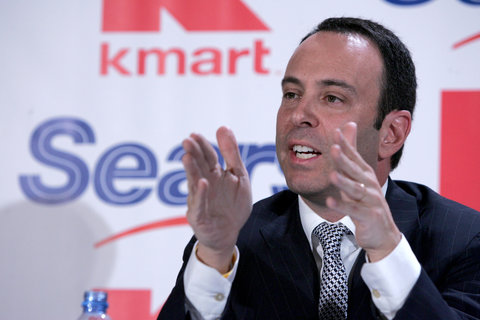Hedge Funds
|
I.P.O./Offerings
Sears Weighs a New
Unit to Hold Some of Its Real Estate
By
Michael J. de la Merced
November
7, 2014 9:10 am
|

Sears in Chambersburg Mall in
Scotland, Pa., is closing in mid-January. As sales fall flat,
Sears is trying to revamp its operations.
Credit Markell Deloatch/Public Opinion, via Associated Press |
Updated, 8:47 p.m. |
Over the
last year,
Sears Holdings has moved to sell a
variety of assets to help raise money, including the Lands’ End business and
some of its ownership in its Canadian enterprise.
On Friday,
the struggling retailer unveiled yet another unusual financial maneuver that
it may employ: selling some of its stores to a new real estate investment
trust.
Sears
disclosed in a regulatory filing that it was weighing selling 200 to 300
stores to a real estate investment trust, or REIT, and leasing back those
sites. The new entity would receive financing to buy the stores both by
giving Sears shareholders the right to buy stock in the investment trust and
by taking on debt.
It is only
the latest possible move by Sears and its chief executive and largest
shareholder, the hedge fund manager
Edward S. Lampert, to raise cash to
offset a steady stream of losses. Once the country’s biggest retailer, the
company has steadily moved to shrink its troubled empire as sales at its
eponymous stores and Kmart locations have tumbled.
Sears
disclosed that its comparable sales for its domestic locations in the 39
weeks that ended Nov. 1 were roughly flat, while those at its Kmart stores
were down 1.2 percent. Perhaps more troubling, the company added that it
could lose up to $630 million in the quarter ended Nov. 1.
Still, the
disclosure about the potential formation of a REIT sent shares of Sears up
31 percent, to $42.81.
The maneuver
also highlights the company’s dwindling range of potential financing
options. Already, the company has raised $300 million by giving existing
investors the right to buy shares in Sears Canada — a move taken after the
department store chain failed to sell the Canadian business outright.
And it has
borrowed $400 million from Mr. Lampert, pledging 25 stores against the loan.
Now the
company is turning to its last remaining crown jewels, its real estate
holdings. It has already sold a number of locations, the latest being its
store in Cupertino, Calif., which analysts have regarded as a prime
location.
But a
sale-leaseback, as the contemplated maneuver is known, would be the most
drastic bit of financial engineering yet. While the initial number of stores
sold would be up to 300, Sears said in a blog post on Friday that a REIT
could eventually own most of its roughly 1,800 stores, leaving the company
with about 400 to 500 sites.
Putting most
of the company’s real estate in a separate entity ultimately raises
questions about what Mr. Lampert will do with the company. (As the company’s
biggest shareholder, with a roughly 48.5 percent stake, he would most likely
own about the same percentage of the investment trust.)
Though
selling the stores to the REIT would generate much-needed cash and assuage
any vendors nervous about being paid, the move would also saddle Sears with
lease payments and yet another financial burden.
And the
ultimate benefit for shareholders is not entirely clear, since they must
finance the creation of any such investment trust and therefore would have
to pay for the purchase of the department stores.
Removing
assets from Sears itself could also impair the retailer’s ability to take
out additional financing in the future. As of Nov. 1, the company had about
$330 million in cash on hand and $234 million available through existing
credit lines.
Two months
ago, Gary Balter, an analyst at
Credit Suisse, argued that the
retailer’s future did not look bright. The REIT plan, he said in a telephone
interview on Friday, did little to change his mind. “If you read through
today’s announcement, he’s almost accepting that turning the company around
as a retailer is not going to happen,” Mr. Balter said, referring to Mr.
Lampert.
|

Edward S. Lampert, the chief executive
of Sears, in 2004. Credit Vincent Laforet/The
New York Times. |
Copyright 2014
The New York Times Company |